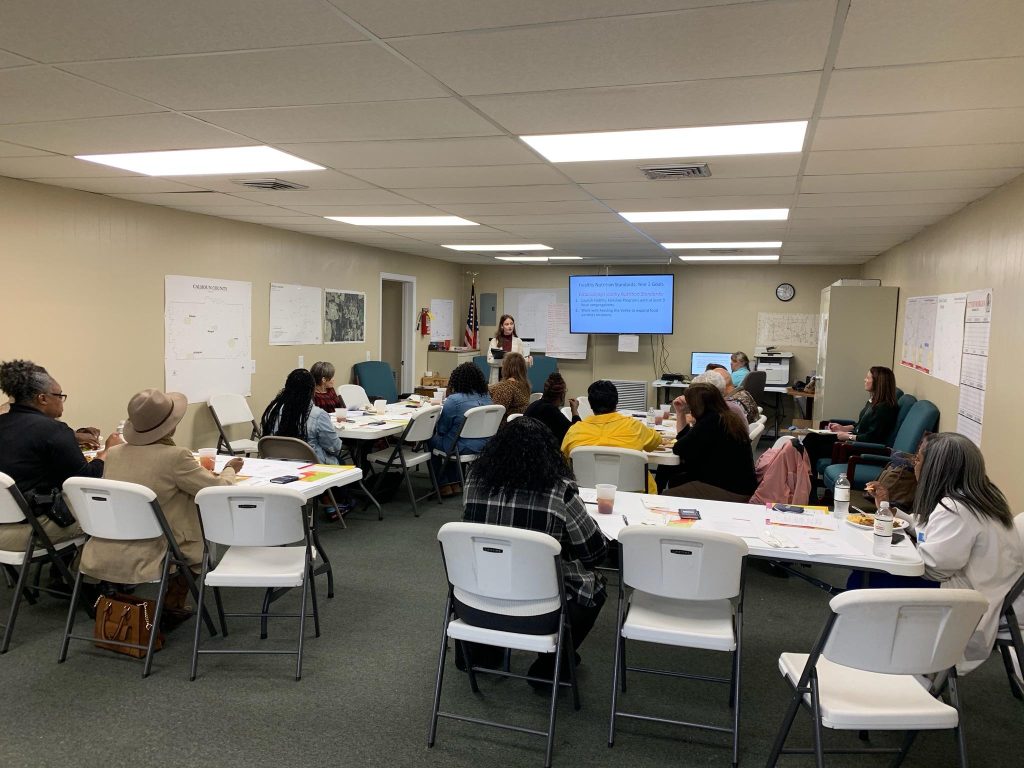
Researchers Nekeisha Randall, Katie Sanders, Alexa Lamm, and Alison Berg recently published an article in the Journal of Nutrition Education and Behavior to help explain the influence of culture on rural residents’ perceptions of a food access and physical activity intervention. The intervention, called Healthier Together, aims to increase policy, systems, and environmental (PSE) changes to support healthy lifestyle behaviors in rural counties most at risk for diet-related chronic disease.
Healthier Together uses community coalitions, or community groups, to help guide project implementation in each county (Figure 1). The participants for the study were members of the five community coalitions in each county involved in Healthier Together (N = 39). The authors investigated coalition members’ understanding of how culture and social norms influenced community members’ preferences for food and physical activity behaviors.
The researchers found that social norms, race relations, generational factors, and hopes for the community’s future impacted coalition members’ perceptions of Healthier Together. While PSE changes often focus on the physical environment, the author argue that factors beyond what is happening from an infrastructural perspective in the community has a large impact on the success, accessibility, and inclusivity of the project. Using their proposed framework (Figure 2), they hope to increase the cultural responsiveness of health promotion projects in rural areas.

To read the article in full, click here.